This guide takes beginners through the 12 necessary steps to a working board game, from getting an idea to publishing the finished product
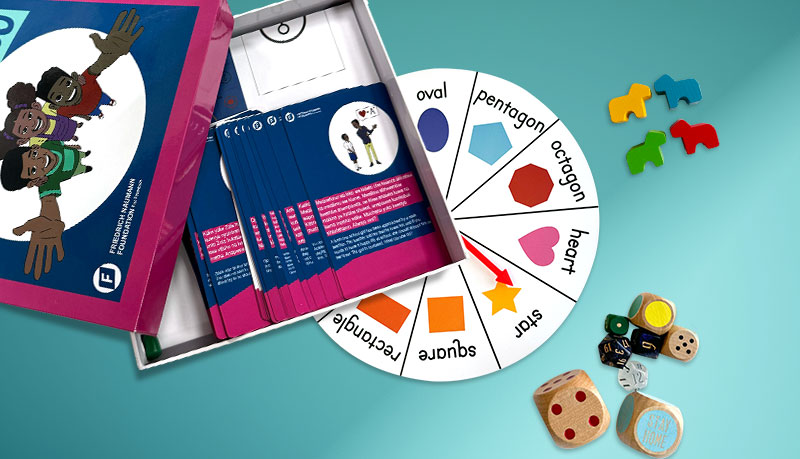
In this quick guide, we’ll take you through the 12 steps needed to understand how to design a board game. Board game design is a lot of fun, for sure, but it can also be challenging and there’s often quite a steep learning curve to climb if you’re coming to it for the first time. While you should enjoy it, there’s still a lot of creative thinking and — let’s face it — hard work involved. Believe us, we’ve been working with indie board game designers for decades now, and we know there are no shortcuts. You can’t jump from a cool idea to a fabulous game all boxed up and ready to go in a single, giant leap. But, drawing on tons of experience helping folks develop their games and bring them to final fruition, we’ve organized these steps to take you logically and intelligently through the process, from idea generation to promoting your finished game. Once you’ve read through this with care, you should be confident to make a start. But if at any point you need clarification or more help, get in touch—you can contact us by telephone, email, the chat, or on Skype—and we’ll be happy to help you. Let’s get started!
Step one: the big idea
If there’s one thing you need to get clear before you start designing, it’s your “big idea”. Every game needs this: a core concept, a central theme, a unifying context within which the game can grow and that will keep it coherent and meaningful. Now, we know that might sound a bit vague and conceptual, but it’s very important. So, let’s break it down into practical steps.
How do you get an idea for a board game?
Even if you already have an idea for a board game — or several ideas! — don’t skip this step. Most ideas, however inspired, don’t come ready-to-go straight out of the… er, box! It’s still worth thinking about where ideas for board games can come from and how to develop and test them when you get them. Not all ideas, even if they’re exciting concepts, are robust enough to become games that people will want to play. As you read through these suggestions, you may find that it sparks new inspirations or that you discover an approach you hadn’t thought of before. If you haven’t settled on an idea for your game yet, don’t worry. Try out these ways of getting an idea and you’ll soon be on your way.
- Think about games you’ve played and enjoyed. While you don’t want to plagiarize someone else’s game, it can be a good starting point for generating your own ideas. Ask yourself how that game could be different? What do you enjoy about it? Could think of other themes, goals, and mechanics which might produce similar effects in different contexts? Spin it out in new directions, changing a mechanic here, or making a new ‘win condition’ and see where the process leads you. They also look at why the idea works in this game. What makes it robust? How does it support the mechanics, the theme, and the style of the game (cooperative, trading, worker placement, race-to-the-end, combat, etc?) Then check your own idea has enough going to do all the same work.
- Think about books you’ve read or movies you’ve seen. You could take ideas for the ‘story’ or ‘theme’ of a game from a favorite novel or movie and start thinking about how you would make it into a board game. This is a great way to drill down into the core idea. Read the taglines or blurbs and think about how the movie or novel resolves all its conflicts at the end. A good game is kind of like a live-action movie or “make your own adventure” novel, in which the players are the acting heroes. Make sure that your idea gives them a clear goal to achieve and a logical set of obstacles they must overcome to achieve it.
- Play a lot of games! One of the most astonishing things we see is when clients come to us hoping to make a board game and they’ve hardly ever played any games—just as so many aspiring authors don’t read! Just play as many games as you can and of as many varieties as you can, as it will spark all sorts of ideas of your own. But remember to keep notes! Playing lots of games is also the best way we know to get familiar with how themes, mechanics, rules, and dynamics all work together in a successful game.
- Try taking two or three popular games and ‘mashing’ them together to see what new ideas emerge.
- Think of the worst game you ever played. Now imagine that you’ve been given the task of transforming it from a garbage game into a golden game. What would you do to fix it? Obviously, you can’t then go and publish only an improved version of someone else’s game. But the process will teach you a lot that you can then bring to your own game idea.
- Keep a notebook handy — or an app on your phone, or whatever you prefer — everywhere you go, to jot down ideas and inspirations that come to you when you’re waiting in line in the store, riding the bus to work, or dozing off in front of the TV in the evening. Ideas can pop up anytime — especially once you start looking for them — so don’t let them slip away!
- Invite your friends around to play a few of your favorite games and then have a brainstorming session to see how many ideas you can all come up with. Often, collaborating and sparking ideas off of each other can get the creative juices flowing. Several of the most successful games we’ve been involved in producing have been based on teamwork and collaboration.
There may be a zillion other ways that good ideas for new board games get discovered. But these should get you started. Once you’ve got an idea, and at least ‘mentally tested” it, you can move on to the next step.
Step two: a working title
Now you have an idea — and, yes, fair enough, not much else — it’s time to flesh it out into an engaging, fun-to-play game that people will love to play. But before you do, give it a name. Now, you might think it’s a bit too soon to name it. But there’s a good reason to give it a working title. It’ll help you focus and remember what the core idea is as you go through all the messy, iterative, shape-shifting processes of game design that follow. Remember, it’s just a ‘working title’ so you can always change it later. But don’t be tempted to miss this step. Game development can get messy and sometimes seem overwhelming as you progress through the process. Just having a name really helps you to keep focused as you bring everything from chaos to order and your completed game. As we said, you can always change the publication name later if you come up with something better.
Step three: define the player experience
A good game is one that focuses on what the players will get out of it. And what most players want from a board game—other than maybe to win, although that’s often not the real motive for playing—is a positive emotional experience. They want intrigue, excitement, laughter, tension; they want to feel smart, brave, quick-witted, lucky, victorious; they want, in short, to feel good in one way or another. So, before you go further, ask yourself what kind of experience your board game is going to give to your players. Then write it down. Try to sum it up in no more than one or two sentences and pick out a key emotion-word that best sums up what you’re aiming for.
For example, if it’s a mystery game, do your players want to experience a sense of intrigue or is it more that they want to feel smart when they figure out the clues? If it’s a combat game, is it more the intellectual satisfaction of a strategic battle they want or the visceral excitement of clashing swords? And don’t forget humor; often players want to have a good laugh with their buddies when playing as much as anything else. But whatever it is that your players want and your game can give, you need to know in advance to make sure that everything you do as you design the game is tailored to meet that need. It’s often a good idea to think of game design as designing an experience as much as anything else.
Step four: hit on a theme
Theme is vitally important to a good board game. But to be clear, the theme is not the same as the idea. This is something we see newbie game designers getting confused with. The idea is the basic concept. Theme is what turns the mechanics — dice rolling, taking turns, picking and discarding cards, moving meeples, that sort of thing — into an immersive imaginative experience with logic and order underpinning it. If you think about your favorite board games, you’ll soon see that they have themes, often expressed in the kind of world in which they’re set, who the players (or their avatars) are, and what everyone’s trying to achieve. So, a theme could be medieval, say, or 1930s noir, or space age, supernatural, urban crime, wild west, renaissance court intrigue, cold war spies, set on a farm, or…anything that gives the game a setting, an imaginative context, and its distinct mood and ‘feel’.
Step five: who will the players be?
Another vital question to answer in advance. This will depend on your theme, but you need to know. Will your players be house guests at a mansion investigating a murder? (Clue) Will they be dueling wizards? (Magic: The Gathering) Maybe they’ll be imperial powers seeking world domination (Risk) or just themselves trying to be smart (Trivial Pursuit). Either way, give your players something to be that makes sense within the context of your game idea and the theme which embodies it. You can also give your players a degree of agency in this, so that they have a say in who they want to be. The perfect example of this is in the case of tabletop role-playing games. Players may elect to be elves, wizards, dwarves, thieves, rangers, space pilots, archeologists, scientists or whatever the options in keeping with the theme may be. They can then add powers and abilities to their alter-ego characters. While you needn’t go all out in making an RPG, you can incorporate an element of this freedom into a more structured game design.
Step six: choose your mechanics and components
This step — like all the steps here — you’ll come back to and change and tweak throughout the design process, so—important as it is—don’t get too hung up on it at the outset. But you’ll need to start somewhere. So, choose how the game will work. Will players take it in turns? Will they roll dice or draw cards to decide what they can do in a turn? Will play be competitive (as in a race game) or co-operative (as in many role-playing games)?
Give this some serious thought. Your mechanics will dictate what components you’ll need (a board, cards, meeples, dice, score sheets, etc.) But you can develop them later as the structure and play-style develops. Again, this is a good moment to game back to your game collection or get down to your local game store and see what mechanics other games similar to yours are using. But there’s nothing random about mechanics and no mechanic should be in a game that isn’t absolutely necessary to make it function. If you want a deeper dive into the theory and practice of board game mechanics in design, read, What Are Board Game Mechanics?
Step seven: put limits on player actions (make some rules!)
Rules, rules, rules! This aspect of how to design a board game is often one of the most complex and challenging. It takes a great deal of patience, persistence, and trial-and-error to get right. The purpose of rules in a board game is twofold and kinda contradictory. The rules should make playing the game possible and make it hard to win. So, you need to decide what rules you need to make it possible for each player to have a real chance at winning, but impose restrictions (waiting your turn, only moving X number of spaces in a round, setbacks and penalties, etc.) so they can’t win too easily. This can get really complex. But for now, as with the mechanics — rules and mechanics are closely related, by the way — don’t get bogged down. Think up a few rules you guess might work and run with them. You can — and almost certainly will — change them later. If you’d like to know more about how to design rules for a board game, check out, How to Write a Board Game Rule Book.
Step eight: set the 'win condition'
Everybody wants to win, right? But how do you know when a player has won? Might sound like a dumb question, but it’s not as simple as you may think at first! What a player — or players — must do to win the game is called the ‘win condition’. This is super-important. It must be achievable (or your players will be mighty pissed with you!) and it must be unequivocal (so that no-one can argue with it when someone wins). Typical win conditions are being the first to get to a location, collect a set (of cards, gems, points), eliminate other players, occupy a territory, and more. The win condition you choose will come out of your idea, theme, mechanics and rules. And this, too, might change as the game design develops.
Step nine: player interactions
One thing you must always remember is that—with the obvious exception of solo games—most people play board games as a social activity. It’s as much about getting together and having a good time with friends and family as it is about facing challenges, overcoming the odds, and winning. So, this way that your game allows and encourages the players to interact with each other is a vital aspect of your game’s success. When thinking about how to design a board game, this is an essential consideration. In many games, players don’t really interact with each other; they take their turns, but the actions and choices they take and make don’t have a direct impact on the other players. In our experience, these games are less popular and get played less often. In other games, players interact a lot and can push each other forward, set each other back, collaborate and form alliances, or otherwise influence each other’s game experience. There are pros and cons to each kind of player interaction and there’s a range from zero-interaction (Ludo) to 100% interaction (Dungeons & Dragons). But we’d encourage you to design a game that has at least a degree of player interaction built-in if you want your game to be a success.
Step ten: game length and player numbers
How long should a game take to play? Good question! Is this going to be a fun, fast-moving game that’s over in less than half an hour, or a massive campaign-style game that could go on for hours or even days? Will it be one player against the rules (Solitaire) a couple of players against each other (Chess) or multiple players either competing (Monopoly) or co-operating as in most role-playing games? Only you can decide; but decide you must. The length of your game shouldn’t be a random result of your other design features. It needs to be tailored to your player’s needs and expectations and will take into account their age, their motivations for playing, and more. It’s actually something that is often printed on the box, too. So make sure you playtest for this and can give a clear idea to your players of how much time they’ll need to dedicate before they commit. Talking of playtesting…
Step eleven: playtesting
We’ve listed this as “a step” but the truth is, it’s something you’ll need to repeat many times during your design process. Once you have your roughed out sketch of a game together with all the basic elements at least represented: an idea, a theme, a few mechanics, basic components, some rules; it’s time to start testing it all to see if it works. This is where the fun — and most of the work — really starts.
You can begin by play testing alone, then with a handful of friends and family members, then take it along to your game night or club, then conventions. You might also want to look for professional playtesters online or reach out for playtesters on your social media channels. Even when making a board game, if you or someone you know has the skills, it’s often a good idea to mock up a digital version of your game for people to playtest online. All the time, make sure you’re asking questions, listening to suggestions, making changes and improvements as you go. This can be a long process. But you can’t play-test too much; especially if you want to sell your game. Which brings us to the final step.
Step twelve: bring your game to the world
There are two ways to ‘get your game out there’. You can make a prototype and hawk it around game publishers or you can self-publish it (which usually involves setting up and running a Kickstarter campaign). Both are potentially viable, neither is easy. Which way you go will depend on your personality, your ambitions, and how much work and money you want to invest. It’s worth taking plenty of time to evaluate the pros and cons as they relate to your personal situation. Talk to people who’ve done both. Pick their brains. And if one doesn’t work for you, you can always switch and try the other.
Ready to build your prototype?
Once you’ve made and tested a great game and you’re ready to build your professional-level prototype, talk to us. We’ve been in the industry for decades and have helped lots of game designers to deliver a great board game product to the market. We’re friendly, knowledgeable, and have the latest whizz-bang printing and manufacturing tech at our fingertips. Get in touch to talk through your idea or for a no-obligation quote. We’ve made it as easy as possible for you to contact us either by telephone, email, the chat, the contact form, or on Skype. We’re real people and we’ll be happy to help.






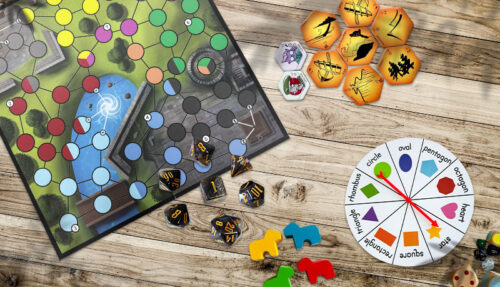
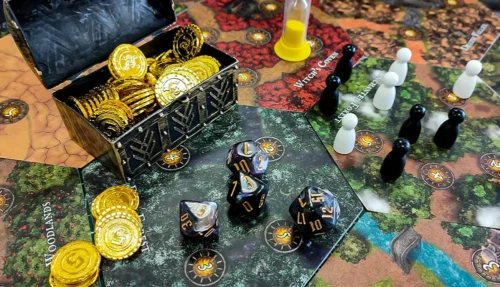
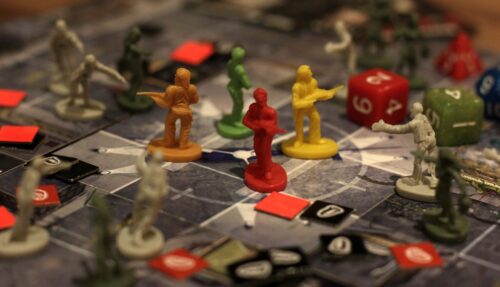
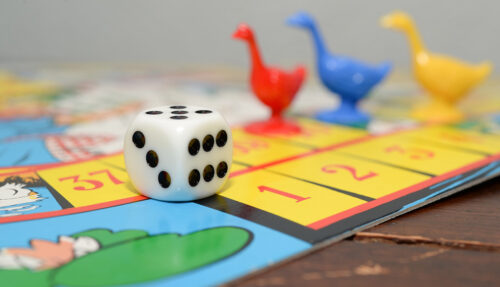
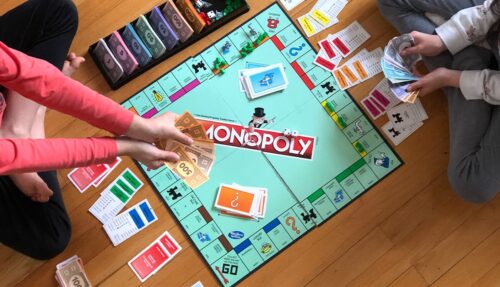
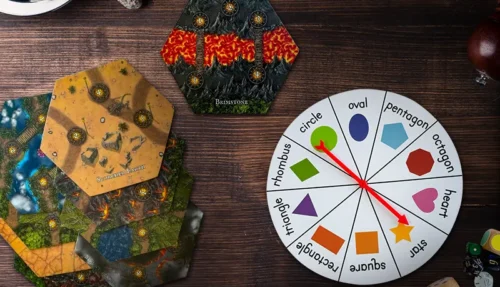
6 thoughts on “12 Steps to Design Your Own Board Game (and Sell It)”
Hi,
I have created a board game and my friends like it. I have tested it already a couple of times and would like to go to the next step.
What can you offer me ?
Hi Alexis, well done for taking the first steps in designing your board game, that's a great start! The next step would be to playtest it more widely, especially with people you don't know. So, try asking at a few games nights, taking it to your nearest games conventions, or looking for games testers online. For a full and detailed introduction of everything you need to know to take a successful professional board game from concept to seeing it on the games store shelves, check out this post: https://www.qinprinting.com/blog/how-to-make-your-own-board-game/ We've also asked one of our team to email you to learn more about your game and how we can help, so keep your eyes on your inbox!
I've created a board game, but so far only the rules for it, and I'm looking for help with the graphics and the actual manufacturing and the costs. I was wondering if you could help me manufacture or at least with a step-by-step method on the costs, since I don't have that much starting capital.
Hi Ray, the rules are a fundamental aspect of any game as they explain the premise, guide the mechanics, and create the conditions for actions and winning or losing. We'd be delighted to help you workout a design for your game and a manufacturing program based on your concept and your budget. We've asked one of our experts to get in touch with you via email so we can open that conversation, get a better idea of what you want to achieve and see how we can help you. In the meantime, you might find the following post really helpful: https://www.qinprinting.com/blog/how-to-make-your-own-board-game/ We hope that helps and we look forward to working with you!
I've created nothing but the rules for a board game, I was thinking you could help me actually manufacture the board game???
Hi Ray, thanks for reaching out again! Please see our previous response to you, which you may have missed. If you haven't seen the email we sent you yet, please check your spam/junk folder in case it ended up there by mistake. If it's gone astray in the ether, just let us know and we'll contact you again. All the best! 🙂